BOETHIUS, Anicius Manlius Torquatus Severinus (ca. 480-ca. 524). De consolatione philosophiae . Text in Latin with anonymous German translation. Commentary by pseudo-Thomas Aquinas. Nuremberg: Anton Koberger 24 July 1473. Median 2 o (333 x 242 mm). Collation: [1 6; 2 8 3-8 1 0 9 8; 10 1 0 11 8; 12-17 1 0 18 6 19-20 1 0 21 8 22 6] blank, 1/2r table;blank, 2/2r text, 9/7r explicit book IV, 9/7v-9/8 blank; Book V, 11/6-8 blank;blank, 12/2r commentary, 18/6 blank, 22/5v colophon, 22/6 blank). 192 leaves (of 200, lacking 8 of the 9 blank leaves [blank 18/6 preserved]). 46 lines. Text single column, the commentary double column. Type: 2:115R, the Latin text spaced to 23 lines per page. 11-, 10-, 5-, 4-, and 3-line initial spaces. Large Maiblumen initials with reserved decoration supplied on first pages of text and commentary (2/2r and 12/2r), the first in red with green infill, the second with the colors reversed, remaining initials alternately red and green, a few initials in brownish-maroon, paragraph marks and capital strokes in red. (Short repaired marginal tear to last leaf of the Boethius (11/5), occasional small stains, faint colored staining to a few leaves [possibly caused by the rubricator], including some apparent offset impressions of leaves.) Late eighteenth-century English gold-tooled olive calf over pasteboard, sides with large central interlocking double-fillet lozenge and rectangle, corner ornaments composed of several small tools including flowers, leafy plants, drawer handles, circles and arabesques on a gilt dotted ground, blind-tooled border of repeated stylized plant tools, spine gold- and blind-tooled, turn-ins gilt, edges gilt (joints split, back cover detached, rubbed); buckram dust jacket. Provenance : a few contemporary interlinear notes on first page of text -- Lilienfeld (Austria), Cistercian monastery: 18th-century inscription on first page of commentary ( Sum: Monasterij Campilili [ ensis ]) -- unidentified 19th-century engraved armorial bookplate -- Albert Ehrman (1890-1969), Broxbourne Library: bookplates and markings; sale, Sotheby's London, 8 May 1978, lot 397 (to Lathrop C. Harper). PROBABLE FIRST EDITION, and the first edition of the German translation; the first book signed by Anton Koberger the most successful German printer/publisher of the 15th century. Priority of this edition over the Latin edition printed anonymously at Basel by Michael Wenssler ca. 1473 has not been conclusively established; the Bayerische Staatsbibliothek gives precedence to the present edition. An edition printed at Savigliano by Johannes Glim, dated ca. 1471 by GW, should be dated to ca. 1473/74 (cf. Scholderer, BMC VII, p. lxi). The identity of the commentator has not been resolved: possible candidates are Thomas Waleys, William Whetley, and a Scot named Marquard (cf. P. Courcelle, La Consolation de Philosophie dans la tradition littéraire , Paris 1967, pp. 322-23). Koberger reprinted the Latin text in 1476; the anonymous German translation (whose earlier attribution to Peter von Kastel has been recently disputed: cf. Verfasserlexikon 2 I:921), was reprinted in 1500 by Johann Schott at Strassburg. Considered by Gibbon a "golden" book, the Consolation of Philosophy was a chief source of Platonic and Neoplatonic philosophy in the middle ages. From the Carolingian period to the late Middle Ages it was the most widely copied work of secular literature in Europe. Written in prose and verse while Boethius was in prison at Pavia on charges of treachery, it is a dialogue between Boethius and Philosophy, who has come to console the author in his autobiographical desolation. After helping Boethius understand himself, his good fortune and his misfortune, and free will, Philosophy leads him to true happiness, which is knowledge of God. The Consolation of Philosophy incorporates large parts of Plato's Timaeus . This is a fine copy of a rare edition. No other copies have been sold at auction in England or America during the
BOETHIUS, Anicius Manlius Torquatus Severinus (ca. 480-ca. 524). De consolatione philosophiae . Text in Latin with anonymous German translation. Commentary by pseudo-Thomas Aquinas. Nuremberg: Anton Koberger 24 July 1473. Median 2 o (333 x 242 mm). Collation: [1 6; 2 8 3-8 1 0 9 8; 10 1 0 11 8; 12-17 1 0 18 6 19-20 1 0 21 8 22 6] blank, 1/2r table;blank, 2/2r text, 9/7r explicit book IV, 9/7v-9/8 blank; Book V, 11/6-8 blank;blank, 12/2r commentary, 18/6 blank, 22/5v colophon, 22/6 blank). 192 leaves (of 200, lacking 8 of the 9 blank leaves [blank 18/6 preserved]). 46 lines. Text single column, the commentary double column. Type: 2:115R, the Latin text spaced to 23 lines per page. 11-, 10-, 5-, 4-, and 3-line initial spaces. Large Maiblumen initials with reserved decoration supplied on first pages of text and commentary (2/2r and 12/2r), the first in red with green infill, the second with the colors reversed, remaining initials alternately red and green, a few initials in brownish-maroon, paragraph marks and capital strokes in red. (Short repaired marginal tear to last leaf of the Boethius (11/5), occasional small stains, faint colored staining to a few leaves [possibly caused by the rubricator], including some apparent offset impressions of leaves.) Late eighteenth-century English gold-tooled olive calf over pasteboard, sides with large central interlocking double-fillet lozenge and rectangle, corner ornaments composed of several small tools including flowers, leafy plants, drawer handles, circles and arabesques on a gilt dotted ground, blind-tooled border of repeated stylized plant tools, spine gold- and blind-tooled, turn-ins gilt, edges gilt (joints split, back cover detached, rubbed); buckram dust jacket. Provenance : a few contemporary interlinear notes on first page of text -- Lilienfeld (Austria), Cistercian monastery: 18th-century inscription on first page of commentary ( Sum: Monasterij Campilili [ ensis ]) -- unidentified 19th-century engraved armorial bookplate -- Albert Ehrman (1890-1969), Broxbourne Library: bookplates and markings; sale, Sotheby's London, 8 May 1978, lot 397 (to Lathrop C. Harper). PROBABLE FIRST EDITION, and the first edition of the German translation; the first book signed by Anton Koberger the most successful German printer/publisher of the 15th century. Priority of this edition over the Latin edition printed anonymously at Basel by Michael Wenssler ca. 1473 has not been conclusively established; the Bayerische Staatsbibliothek gives precedence to the present edition. An edition printed at Savigliano by Johannes Glim, dated ca. 1471 by GW, should be dated to ca. 1473/74 (cf. Scholderer, BMC VII, p. lxi). The identity of the commentator has not been resolved: possible candidates are Thomas Waleys, William Whetley, and a Scot named Marquard (cf. P. Courcelle, La Consolation de Philosophie dans la tradition littéraire , Paris 1967, pp. 322-23). Koberger reprinted the Latin text in 1476; the anonymous German translation (whose earlier attribution to Peter von Kastel has been recently disputed: cf. Verfasserlexikon 2 I:921), was reprinted in 1500 by Johann Schott at Strassburg. Considered by Gibbon a "golden" book, the Consolation of Philosophy was a chief source of Platonic and Neoplatonic philosophy in the middle ages. From the Carolingian period to the late Middle Ages it was the most widely copied work of secular literature in Europe. Written in prose and verse while Boethius was in prison at Pavia on charges of treachery, it is a dialogue between Boethius and Philosophy, who has come to console the author in his autobiographical desolation. After helping Boethius understand himself, his good fortune and his misfortune, and free will, Philosophy leads him to true happiness, which is knowledge of God. The Consolation of Philosophy incorporates large parts of Plato's Timaeus . This is a fine copy of a rare edition. No other copies have been sold at auction in England or America during the
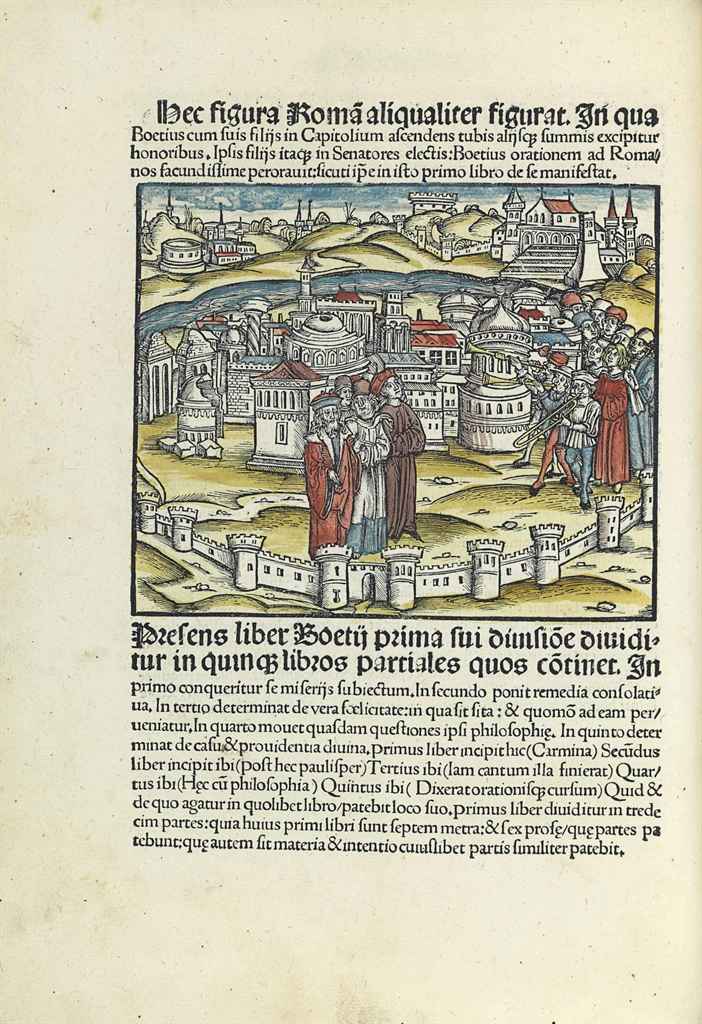
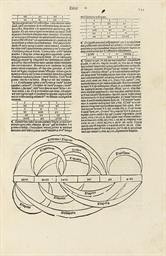
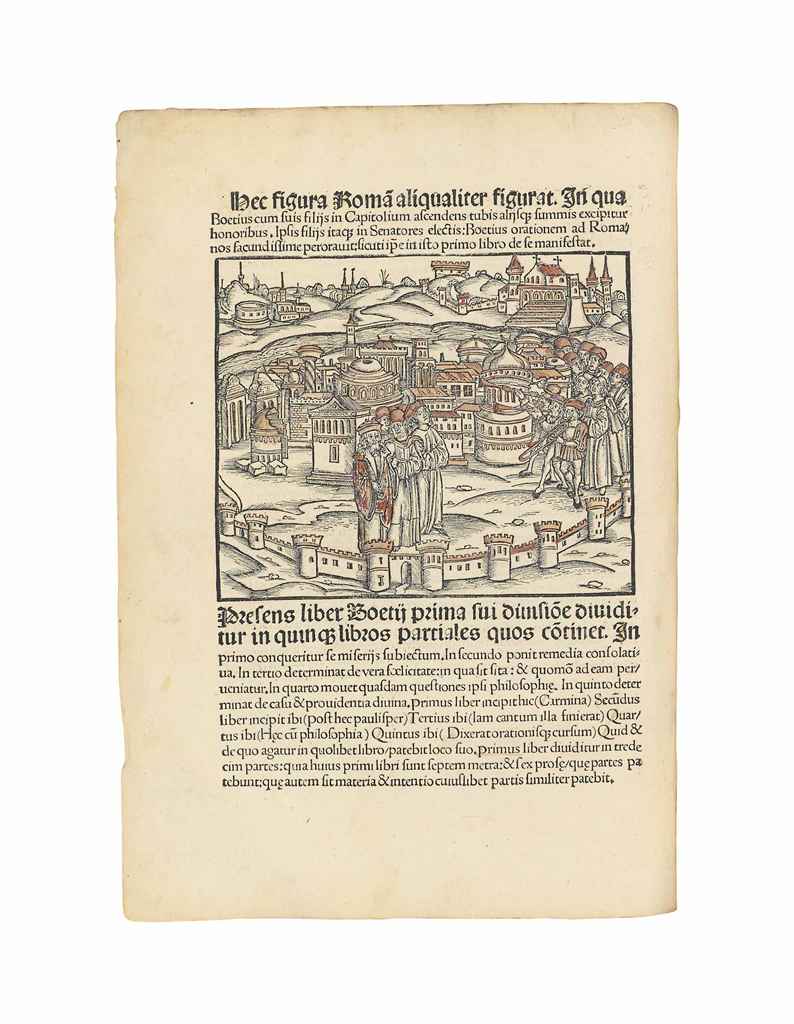

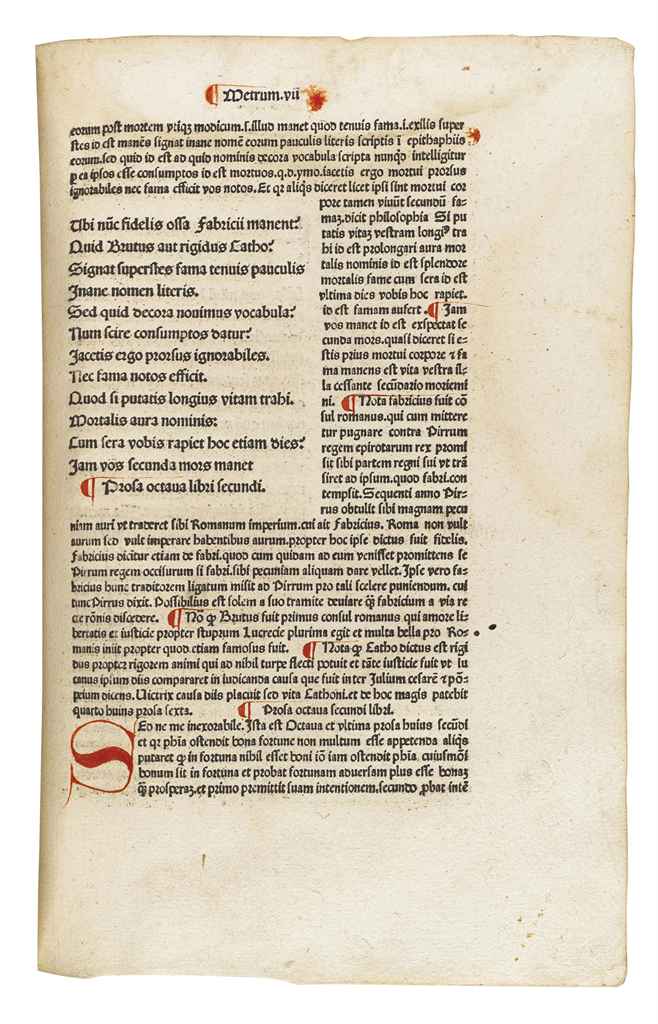


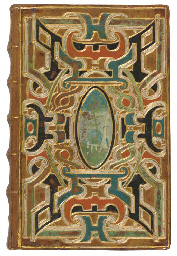




.jpg?w=400)
.jpg)

Try LotSearch and its premium features for 7 days - without any costs!
Be notified automatically about new items in upcoming auctions.
Create an alert